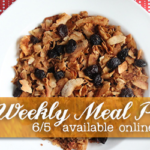It is spring – finally – and farmer’s markets and CSAs are starting to sell spring produce. If you are like me, you have the fear that if you buy it you won’t be able to eat it all before it goes bad. That is why we are going to talk about storing produce. Now we have a disclaimer: This post is for FRESH produce (local farmers’ markets and CSAs) and not grocery store produce. Grocery store produce is an entirely different beast since most produce can be purchased all year long. Strawberries should never be available in December but can be found at many grocery stores in the bed of winter.
Storing Produce – Why to buy seasonal
Now we are going to get straight to the point. I am going to tell you why to buy seasonal foods before teaching you about storing produce.
- Less expensive. Simply put, it’s all about supply and demand. When produce is in season, the relative abundance of a crop usually makes prices grow down.
- Tastes better. Seasonal produce is simply more delicious than produce grown out of season. Produce, which is grown in season and purchased locally, is allowed to fully ripen on the vine, harvest at its peak, and usually sold the next day. On the other hand, non-seasonal produce is picked before it is ripe and may travel a week or more in order to reach the supermarket from wherever it was grown.
- Healthier. Seasonal produce is picked when it is fully ripe and is loaded with vital nutrients. Some crops can even have up to three times more nutrients when grown in season. Also, seasonal produce usually has fewer chemicals added to them. To make non-seasonal produce look more appealing, it is often given chemical ripening agents, wax coatings, and other preservatives, which can be harmful to the body when ingested.
- Organic. Many smaller farms sell produce that is not technically “organic,” as it is a costly to go through the organic certification process, but is free from pesticides and herbicides. If in doubt, ask the farmer about the growing practices on the farm.
Just a reminder, the following list is only for FRESH produce. This storing vegetables list does not apply to produce in the grocery store since it is normally sprayed with preservatives or other fake substances like wax. For your convenience, I created this into a downloadable guide for you to print out as well.
- Apricots. Store at room temperature in a paper bag until ripe. Then, place in a plastic bag in the refrigerator for 3 to 5 days.
- Artichokes. Refrigerate in a plastic bag or air-tight container for up to 5 days.
- Asparagus/White Asparagus. Trim the ends of each stalk before storing. Then, either wrap them in a damp paper towel before placing in a plastic bag in the refrigerator or place them on a counter standing upright in a jar or bowl in room temperature water. Asparagus will last up to 5 days with either storage method.
- Barbados Cherries. Store unwashed in an airtight container in the refrigerator for up to 5 days or freeze immediately.
- Belgian Endive. Place in the crisper section of the refrigerator and use within 2 weeks.
- Bitter Melon. Place in a paper or plastic bag in the refrigerator for 3 to 5 days.
- Broccoli. Place in an open container or wrapped in a damp paper towel and store in the refrigerator for 3 to 5 days.
- Butter (Bibb) Lettuce. Wash and dry before storing either in a plastic bag or an airtight container in the refrigerator for up to 5 days.
- Cauliflower. Refrigerate in an airtight container for up to 5 days.
- Chayote Squash. Refrigerate in a plastic bag for up to 1 month.
- Cherimoya. Store at room temperature until ripe. Then, refrigerate for 1 to 2 days. Do not eat the seeds as they can be toxic.
- Collard Greens. Remove any bands or twist-ties and either wrap in a damp paper towel and store in an airtight container in the refrigerator or place upright in a jar or bowl of water and store in the refrigerator or on the counter for up to 5 days.
- Fennel. Store in a plastic bag or an airtight container in the refrigerator for up to 5 days.
- Fiddlehead Ferns. Tightly wrap in a damp paper towel and store in the refrigerator for up to 3 days. Fiddlehead ferns are best when eaten as soon as possible after harvesting.
- Grapefruit. Store at room temperature for up 1 week or refrigerate for up to 3 weeks. Never store in an airtight container.
- Green Beans. Refrigerate in a plastic bag or in an open container covered with a damp paper towel for up to 5 days.
- Honeydew Melons. Store uncut at room temperature or cut in the refrigerator for up to 2 weeks.
- Jackfruit. Store in the refrigerator for up to 7 days or the freezer for up to 2 months.
- Limes. Refrigerate for up to 2 weeks. Never store in an airtight container.
- Mangoes. Store at room temperature in a paper bag until ripe. Then, remove from the paper bag and store at room temperature for 1 or 2 days. Store cut and peeled mangoes in the refrigerator for 1 to 2 days.
- Morel Mushrooms. With a damp cloth or soft brush, remove excess dirt. Store unwashed in a paper bag or wax paper in the refrigerator for up to 3 days.
- Mustard Greens. Remove any bands or twist-ties and wrap in a damp paper towel and store in a plastic bag or an airtight container in the crisper section of the refrigerator for up to 5 days.
- Oranges. Store at room temperature for 1 to 2 days or refrigerate for 1 to 2 weeks. Never store in an airtight container.
- Peas. Store unshelled peas in a perforated plastic bag in the refrigerator for 3 to 5 days. Shell immediately before cooking.
- Pineapples. Store uncut at room temperature for up to 5 days. Refrigerate cut pineapple for 2 to 3 days. Pineapples are best when eaten as soon as possible after harvesting.
- Radicchio. Store in an open container covered with a damp paper towel in the coldest section of the refrigerator for 2 to 3 days.
- Ramps/Wild Leeks. Refrigerate unwashed and untrimmed in a plastic bag for 1 to 2 weeks.
- Red Leaf Lettuce. Wash and dry before storing either in a plastic bag or an air-tight container in the refrigerator for up to 5 days. Wash and dry again immediately before eating.
- Rhubarb. Refrigerate in a plastic bag or store wrapped in a damp paper towel in an open container for up to 5 days. Do not eat rhubarb leaves as they are toxic.
- Snow (Sugar Snap) Peas. Store unwashed in a perforated plastic bag for up to 5 days. Snow peas are best when eaten as soon as possible after harvesting.
- Sorrel. Store unwashed in a plastic bag in the crisper section of the refrigerator for up to 3 days. Sorrel is best when eaten as soon as possible after harvesting.
- Spinach. Wrap in a damp paper towel and store in a plastic bag or airtight container in the refrigerator for 3 to 5 days.
- Spring Baby Lettuce. Wash and dry before storing either in a plastic bag or an air-tight container in the refrigerator for up to 5 days. Wash and dry again immediately before eating.
- Strawberries. Store unwashed in a paper bag in refrigerator for 1 to 3 days.
- Swiss Chard. Store unwashed in a plastic bag in the crisper section of the refrigerator for 2 to 3 days.
- Vidalia Onions. Wrap each onion in a dry paper towel and store in the refrigerator for up to 6 months. Alternately, store in the legs of clean, sheer pantyhose. Tie a knot between each onion and hang in a cool, dry, and well ventilated area.
- Watercress. Wash and dry before storing either in a plastic bag in the refrigerator for 4 to 5 days.
I know this list on storing produce may be a lot to digest, but have no fear because we always have a way to help. You can download it by clicking on the image below. Just for fun, please tweet this message to tell all of your friends about it:
I hope this helps you save money and keep your food fresh longer. Storing produce is not something I ever considered important and now I know why I was wasting so much money. Now we both win, I learned a ton and now you can too without making my same mistakes. Leave me a comment and let me know if I missed anything (this post is just for spring produce). Now it’s time for your meal plan.
Monday
Chia Seed Breakfast “Cereal” from Eat Your Beets
Paleo Hot Dogs and Buns from The Paleo Cavewoman
Kalua Pork from The Joyful Foodie
Tuesday
Sweet Potato Breakfast Skillet with Bacon from Allergy Free Alaska
Tomato and Mozzarella Personal Pizza from Crave By Taylor
Wednesday
Grilled Rib Steak in Bacon Fat
Thursday
Easy Tomato and Cucumber Salad from Cook Eat Paleo
Sriracha Mayo Roasted Chicken from Everyday Maven
Friday
Turmeric Coffee from Paleo Porn
Sweet and Spicy Plantain Pie from Planks, Love, and Guacamole
Saturday/Sunday
Pink Velvet Cupcakes with Maple Vanilla Frosting










 Thrive Market – Real Food at Wholesale Prices
Thrive Market – Real Food at Wholesale Prices
Ummm… beets? carrots? How do we store them best? Thanks!